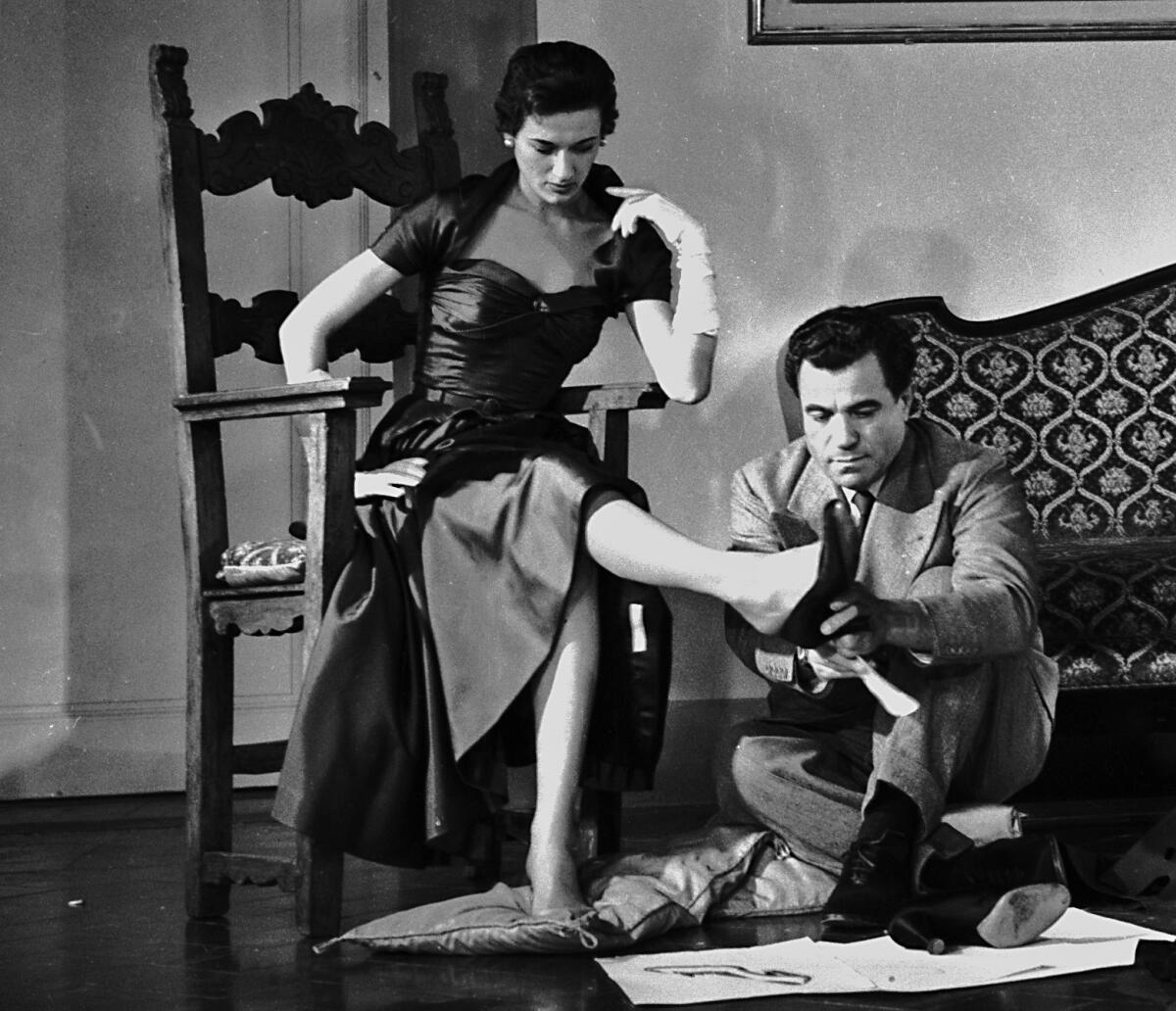Inspiring documentary ‘Salvatore: Shoemaker of Dreams’ walks a safe path

- Share via
Footwear fantasies flooded Salvatore Ferragamo’s imagination from his early childhood in the remote southern Italian town of Bonito. Marked by an unwavering determination to pursue beautiful precision, his professional trajectory evolved from manufacturing shoes for his sisters to international acclaim among a clientele of sought-after cinema stars.
Inspirational, though short on formal innovation, the documentary “Salvatore: Shoemaker of Dreams” from director Luca Guadagnino (“Call Me By Your Name”) tracks Ferragamo’s unfathomable feats across the tumultuous first half of the 20th century. Sometimes in his own voice from recorded interviews and others via actor Michael Stuhlbarg’s narration in the first person, the artisan’s musings color the archival footage with a personable touch.
For your safety
The Times is committed to reviewing theatrical film releases during the COVID-19 pandemic. Because moviegoing carries risks during this time, we remind readers to follow health and safety guidelines as outlined by the CDC and local health officials.
Guadagnino first opens the door into this kingdom of soles and heels with a captivating sequence showing how, even today, the Ferragamo operation entails multiple artisans handling each shoe to ensure all processes are properly completed. It’s an assembly line of dedication and meticulous craftsmanship as opposed to those devised for mass production.
Once the company’s artistic mandate has been visually established, the doc morphs into a familiar succession of images from the past and interviews with Ferragamo’s living family members and prominent fashion figures such as designer Christian Louboutin to assemble a cradle-to-grave account of the visionary’s life. Guadagnino’s voice also creeps into the frame on occasion to enthusiastically agree with the chosen speakers’ words of admiration.
What may shock viewers most is how unimaginably young Ferragamo was when he took his first steps into the shoemaking business. At 12 years old, the precocious boy started his first workshop with employees older than he. Not long after, still a kid, he would migrate to the United States with the intention of studying the technological advances utilized at less refined but highly profitable shoe factories.
Ferragamo’s quintessential immigrant story, which led him to Santa Barbara, serves as a vehicle for a didactic lesson on silent-era Hollywood, where his designs found a receptive and well-off audience. A jovial Martin Scorsese speaks on the nascent world of the movies in the 1920s that immortalized Ferragamo’s creations in the boots of Cecil B. DeMille’s Westerns or shoes worn by screen divas Gloria Swanson and Mary Pickford.
But the director’s desire to position his subject’s victories and struggles against the backdrop of a larger historical context — whether Mussolini’s fascist regime or the Great Depression — hinders our ability to intimately engage with the person behind the fame. The comprehensive approach notes Ferragamo’s return to his homeland to settle in Florence, the time he filed bankruptcy, his phoenix-like resurgence and his marriage to a much younger woman, yet the sum of the film’s many parts feels disjointed.
That a tribute to such an inventive mind — who even studied human anatomy at USC to improve the fit of his product — plays out in a conventional if not cohesive manner perhaps proves that most biographical projects are destined to fail at matching the subject’s brilliance. If Guadagnino had leaned into the whimsy on display in a late segment where CG-animated iterations of some of Ferragamo’s most emblematic shoes dance, the doc could have transcended its standard format.
“Fashion with comfort, that’s what I gave,” said Ferragamo when asked what made his elegantly colorful items stand out. For all its shortcomings of ingenuity, “Salvatore” repeatedly exalts that union as the master’s trademark. Even if he couldn’t summon the experience of walking in Ferragamo’s shoes and getting to know him deeply, Guadagnino makes one appreciate the shoemaker’s indelible footprints from afar.
‘Salvatore: Shoemaker of Dreams’
In Italian, French and English with English subtitles
Rated: PG, for smoking and a suggestive reference
Running time: 1 hour, 50 minutes
Playing: Starts Nov. 4, Laemmle Royal, West Los Angeles; Laemmle Town Center, Encino
More to Read
Only good movies
Get the Indie Focus newsletter, Mark Olsen's weekly guide to the world of cinema.
You may occasionally receive promotional content from the Los Angeles Times.










